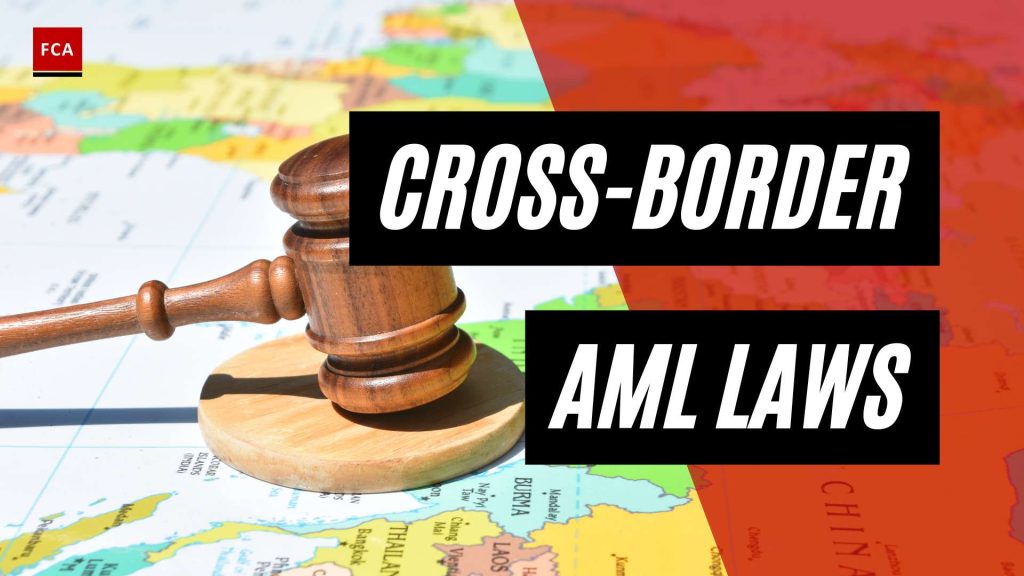Cross-Border Money Laundering: An Overview
Money laundering is a global issue that poses significant challenges for governments, financial institutions, and regulatory bodies worldwide. Understanding the intricacies of money laundering and its impact on cross-border transactions is crucial for developing effective cross-border AML regulations and combating illicit financial activities.
Understanding Money Laundering
Money laundering is the process by which illegally obtained funds are disguised as legitimate assets, making it difficult to trace their illicit origins. This process typically involves three stages: placement, layering, and integration. During the placement stage, illicit funds are introduced into the financial system. In the layering stage, multiple transactions are conducted to obscure the audit trail and make it challenging to trace the illicit funds. Finally, in the integration stage, the laundered funds are reintroduced into the economy as apparently legitimate assets.
Money laundering poses significant risks to the global financial system, as it enables criminals to profit from their illegal activities and undermines the integrity of financial institutions. By disguising the true source of funds, money laundering facilitates the financing of other criminal activities, such as drug trafficking, corruption, and terrorism.
Impact of Cross-Border Transactions
Cross-border transactions play a vital role in the global economy, facilitating trade, investment, and financial flows between countries. However, these transactions also present unique challenges in the context of money laundering. The anonymity associated with cross-border payments can be exploited by criminals seeking to launder illicit funds.
The vast scale of cross-border payments further amplifies the risk of money laundering. In 2022, cross-border payments are projected to reach a value of $156 trillion, highlighting the immense volume of financial transactions that require diligent scrutiny to detect and prevent illicit activities (AML Friends).
The 2016 cyber-heist of $81 million from the Bangladesh Central Bank served as a wake-up call for the vulnerabilities in cross-border payment systems. This incident led to increased regulatory scrutiny on financial institutions to enhance their anti-money laundering (AML) measures and strengthen the security of cross-border transactions (AML Friends).
In response to these challenges, international efforts have been made to establish global AML compliance standards. The Financial Action Task Force (FATF) plays a prominent role in setting international standards for anti-money laundering (AML) and combating the financing of terrorism (CFT), with a particular focus on cross-border transactions (AML Friends).
By understanding the dynamics of money laundering and the impact of cross-border transactions, governments and financial institutions can develop robust cross-border AML regulations and implement effective measures to detect, prevent, and deter money laundering activities.
Jurisdictions of Primary Concern
When it comes to combating cross-border money laundering, certain jurisdictions are classified as “Jurisdictions of Primary Concern.” These jurisdictions are identified as major money laundering countries, with their financial institutions engaging in significant currency transactions involving proceeds from international narcotics trafficking (U.S. Department of State).
Criteria for Classification
The classification of countries into “Jurisdictions of Primary Concern” is based on various factors, including vulnerability to money laundering, the nature of the money laundering situation, international ramifications, impact on U.S. interests, legislative actions taken, oversight of offshore financial centers, effective implementation of laws, and cooperation with U.S. agencies (U.S. Department of State). It’s important to note that the classification is primarily based on the involvement of financial institutions in significant currency transactions related to serious crimes, rather than the evaluation of a country’s legal framework or cooperation in the international fight against money laundering and terrorist financing (U.S. Department of State).
Examples of Major Money Laundering Countries
The classification of countries under the category of “Jurisdictions of Primary Concern” can change over time. In the past, countries like Dominica have moved from the “Primary Concern” column to the “Concern” column, while jurisdictions like Marshall Islands and Niue have moved from the “Concern” column to the “Other” column. Conversely, countries like Bosnia and Herzegovina and Latvia have moved from the “Concern” column to the “Primary Concern” column. Additionally, countries like Afghanistan, Bangladesh, Iran, and Kuwait have moved from the “Other” column to the “Concern” column (U.S. Department of State).
It’s important to consult the most up-to-date sources, such as the International Narcotics Control Strategy Report (INCSR), to identify the current major money laundering countries and jurisdictions of primary concern. The INCSR provides insight into the efforts made by countries worldwide to combat money laundering and terrorist financing, as well as information on their legal frameworks and cooperation with international bodies such as the Financial Action Task Force (FATF) (US Department of State).
Staying informed about the countries and jurisdictions of primary concern is crucial for professionals working in compliance, risk management, anti-money laundering, and anti-financial crime. It allows them to focus their efforts and resources on areas with the highest risk and ensure effective cross-border AML compliance measures are in place.
AML/CFT Regulations for Cross-Border Transactions
When it comes to cross-border transactions, implementing robust anti-money laundering and combating the financing of terrorism (AML/CFT) regulations is of utmost importance. These regulations are designed to prevent money laundering and the illicit flow of funds across borders, ensuring the integrity of the global financial system. In this section, we will explore the importance of an AML compliance framework and the Know Your Customer (KYC) requirements for cross-border transactions.
Importance of AML Compliance Framework
An effective AML compliance framework is essential for financial institutions and businesses involved in cross-border transactions. It provides a systematic approach to identifying, assessing, and mitigating money laundering risks. By implementing a comprehensive compliance framework, organizations can demonstrate their commitment to combating money laundering and maintaining the integrity of the financial system.
The framework should include policies, procedures, and controls tailored to address the specific risks associated with cross-border transactions. It should also encompass ongoing employee training programs to ensure that staff members are well-equipped to identify and report suspicious activities. Regular internal audits and reviews play a vital role in assessing the effectiveness of the AML compliance framework and identifying areas for improvement.
To comply with global AML standards, financial institutions and businesses must stay updated on the international AML compliance requirements set by organizations such as the Financial Action Task Force (FATF). The FATF sets international standards for AML/CFT and provides guidance to countries and jurisdictions to adopt and implement these standards effectively.
Know Your Customer (KYC) Requirements
KYC requirements are an integral part of AML/CFT regulations for cross-border transactions. They involve verifying and documenting the identity of customers and understanding the nature of their financial activities. KYC procedures are crucial in preventing the misuse of financial systems for money laundering and other illicit purposes.
Financial institutions and businesses are obligated to establish and maintain robust KYC procedures to identify and verify the identity of their customers. These procedures typically involve collecting relevant identification documents, such as passports or government-issued IDs, and conducting risk assessments to determine the level of due diligence required for each customer.
KYC requirements also involve ongoing monitoring of customer transactions to detect and report suspicious activities. Financial institutions and businesses must have systems and controls in place to monitor transactions, identify unusual patterns, and conduct enhanced due diligence (EDD) for higher-risk clients.
By adhering to KYC requirements, financial institutions and businesses can minimize the risks associated with cross-border transactions and ensure compliance with AML/CFT regulations. It is crucial to keep in mind that KYC requirements may vary across jurisdictions, and organizations must adapt their procedures accordingly to meet local regulatory obligations.
To learn more about cross-border AML regulations, including reporting requirements and risk assessments, check out our articles on cross-border AML reporting requirements and cross-border AML risk assessment.
In conclusion, an effective AML compliance framework, coupled with robust KYC requirements, is vital for ensuring the integrity of cross-border transactions. By implementing these regulations, financial institutions and businesses can contribute to the global efforts in combating money laundering and the financing of terrorism, safeguarding the global financial system.
Challenges in Cross-Border AML Compliance
Ensuring effective Anti-Money Laundering (AML) compliance in cross-border transactions presents several challenges. Two significant challenges are the harmonization of AML regulations and implementing enhanced due diligence (EDD) for higher-risk clients.
Harmonization of AML Regulations
One of the key challenges in cross-border AML compliance is the lack of harmonization of AML regulations across different jurisdictions. The inconsistencies and variations in AML requirements and standards can create vulnerabilities that criminals may exploit for illicit activities (AML Friends).
To combat cross-border money laundering effectively, international cooperation is crucial. Countries and regulatory bodies must work together to establish global AML compliance standards that promote consistency and strengthen the overall AML framework. This harmonization would help streamline compliance efforts, enhance information sharing, and facilitate the detection and prevention of illicit financial activities.
Enhanced Due Diligence (EDD) for Higher-Risk Clients
Another challenge in cross-border AML compliance is conducting enhanced due diligence (EDD) for higher-risk clients. Financial institutions must identify and assess the risk associated with their clients, particularly those involved in cross-border transactions. This involves obtaining a deeper understanding of their clients’ profiles, business activities, and transaction patterns to identify any potential money laundering or terrorist financing risks.
EDD measures may include obtaining additional information and documentation, conducting more frequent and comprehensive transaction monitoring, and implementing stricter ongoing monitoring procedures. The level of EDD required may vary based on factors such as the client’s country of origin, the nature of their business activities, and the risk associated with the specific transaction.
Implementing robust EDD processes for higher-risk clients is essential to mitigate the risks posed by cross-border money laundering. Financial institutions must stay updated on evolving cross-border AML monitoring techniques and technologies to effectively assess and address these risks.
By addressing the challenges of harmonizing AML regulations and implementing effective EDD measures, the global fight against cross-border money laundering can be significantly strengthened. International cooperation, information sharing, and the adoption of best practices are essential in combatting the ever-evolving landscape of illicit financial activities.
Technology Solutions for Cross-Border AML
As the complexity of cross-border transactions increases, the need for technology-driven solutions to combat money laundering becomes more apparent. Regtech, or regulatory technology, plays a critical role in enhancing anti-money laundering (AML) compliance efforts in the cross-border domain. By leveraging innovative technologies, financial institutions and businesses can mitigate the risks associated with cross-border money laundering and meet regulatory requirements.
Role of Regtech in AML Compliance
Regtech solutions offer advanced tools and technologies that help organizations streamline their AML compliance processes. These solutions utilize machine learning, artificial intelligence, and data analytics to enhance the effectiveness of AML monitoring and detection systems. By automating manual tasks and leveraging data-driven insights, regtech solutions enable more accurate and efficient identification of suspicious activities.
One of the key advantages of regtech is its ability to handle vast amounts of data in real-time. This allows for continuous monitoring and analysis of cross-border transactions, enabling organizations to identify potential money laundering risks promptly. Regtech solutions can flag transactions that deviate from normal patterns, detect anomalies, and generate alerts for further investigation.
Furthermore, regtech solutions assist in the implementation of enhanced due diligence (EDD) measures for higher-risk clients. These solutions aid in client risk assessment, including adverse media screening and evaluating potential sanctions exposure. By automating these processes, organizations can efficiently assess the risk levels of their clients and ensure compliance with cross-border AML regulations ComplyAdvantage.
Leveraging Innovative Technologies
Innovative technologies play a crucial role in strengthening cross-border AML compliance efforts. These technologies include:
-
Machine Learning and Artificial Intelligence: By utilizing machine learning algorithms and artificial intelligence, organizations can analyze large volumes of data and identify patterns indicative of money laundering. These technologies enable the development of predictive models that continuously learn and adapt to new trends and evolving risks.
-
Cloud Computing: Cloud computing provides scalable and secure infrastructure for storing and processing vast amounts of data. It allows organizations to access computing resources on-demand, facilitating the efficient analysis of cross-border transactions and the implementation of AML compliance measures.
-
Data Analytics: Data analytics tools enable organizations to extract valuable insights from their data. By employing advanced analytics techniques, such as network analysis and anomaly detection, organizations can identify complex money laundering networks and detect suspicious activities.
To effectively combat cross-border money laundering, organizations should prioritize partnerships with technology providers that offer regtech solutions aligned with global AML compliance standards ComplyAdvantage. These solutions should be interoperable with partners’ platforms, potentially through the use of APIs, to ensure seamless integration and data exchange.
By embracing technology solutions and capitalizing on the capabilities of regtech, organizations can enhance their cross-border AML compliance efforts. These technologies enable more efficient and effective identification of risks, facilitate compliance with regulatory requirements, and contribute to a safer and more secure international financial system.
International Efforts to Combat Money Laundering
In the global fight against money laundering, various international organizations play a vital role in establishing and implementing cross-border AML regulations. Two prominent entities that contribute significantly to combating money laundering on an international scale are the Financial Action Task Force (FATF) and the International Monetary Fund (IMF).
Financial Action Task Force (FATF)
The Financial Action Task Force (FATF) is an intergovernmental organization that sets international standards and promotes the implementation of legal, regulatory, and operational measures to combat money laundering and the financing of terrorism. Established in 1989, the FATF works to protect the integrity of the international financial system.
The primary objective of the FATF is to develop recommendations, commonly known as the FATF Recommendations, which provide a comprehensive framework for combating money laundering and terrorist financing. These recommendations cover a wide range of areas, including customer due diligence, record-keeping, reporting of suspicious transactions, and international cooperation.
Member countries of the FATF are expected to implement and enforce these recommendations within their national frameworks. The FATF conducts mutual evaluations to assess the effectiveness of member countries’ AML/CFT systems and provides guidance to help countries address any weaknesses or deficiencies.
Role of the IMF in AML/CFT Policies
The International Monetary Fund (IMF) also plays a significant role in the global efforts to combat money laundering and terrorist financing. The IMF provides policy advice, technical assistance, and capacity development programs to its member countries to support the implementation of effective AML/CFT measures.
Through its macroeconomic surveillance and financial sector assessments, the IMF assesses the adequacy and effectiveness of member countries’ AML/CFT frameworks. The IMF’s policy advice and technical assistance aim to enhance the member countries’ ability to detect, prevent, and deter money laundering and terrorist financing activities.
In addition, the IMF actively contributes to shaping AML/CFT policies globally. It provides guidance on macro-critical AML/CFT issues during its Article IV consultations, financial sector assessments, and financial integrity-related measures in Fund-supported programs. The IMF also focuses on the macroeconomic impacts of money laundering, related financial crimes, and terrorism financing in its policy discussions and capacity development efforts.
By working closely with member countries, the FATF, and other international organizations, the IMF plays a crucial role in fostering global cooperation and coordination in the fight against money laundering and terrorist financing.
The collaborative efforts of the FATF and the IMF, alongside other international organizations, are essential in establishing robust cross-border AML regulations and promoting effective AML/CFT policies worldwide. These initiatives aim to safeguard the integrity of the financial system and protect economies from the adverse impacts of illicit financial activities.
Regulatory Initiatives in Canada
As part of ongoing efforts to combat money laundering and terrorist financing, Canada has implemented various regulatory initiatives to strengthen its Anti-Money Laundering and Anti-Terrorist Financing (AML/ATF) regime. These initiatives aim to enhance the effectiveness of the existing framework and address emerging risks in the cross-border financial landscape.
Anti-Money Laundering and Anti-Terrorist Financing Regime
In Canada, the regulation of Money Services Businesses (MSBs) falls under the purview of the Financial Transactions and Reports Analysis Centre of Canada (FINTRAC). FINTRAC enforces the Proceeds of Crime (Money Laundering) and Terrorist Financing Act (PCMLTFA), which obligates MSBs to register with them and adhere to AML/ATF obligations (Canada.ca).
The AML/ATF regime in Canada is designed to prevent money laundering and the financing of terrorist activities by establishing reporting requirements, customer identification measures, and record-keeping obligations. It promotes transparency and accountability in the financial sector to safeguard the integrity of Canada’s financial system.
Amendments to AML/ATF Regulations
The Department of Finance in Canada is actively advancing regulatory initiatives to strengthen the AML/ATF regime and address evolving risks. Some key amendments to the AML/ATF regulations include:
-
Mortgage Lending Entities: The regulations impose AML/ATF obligations on mortgage lending entities, including brokers, lenders, and administrators. This move aims to mitigate the increased risk of money laundering and terrorist financing in the real estate sector and ensure consistency with existing AML/ATF requirements for financial entities (Government of Canada Gazette).
-
Armoured Car Sector: The armoured car sector, which provides secure transportation of cash and cash management services, will be subject to AML/ATF obligations under the PCMLTFA and FINTRAC oversight. These measures aim to mitigate the risks of money laundering and terrorist financing in the armoured car sector (Government of Canada Gazette).
These regulatory initiatives highlight Canada’s commitment to combating money laundering and terrorist financing by expanding the scope of AML/ATF obligations to sectors with heightened risks. By subjecting mortgage lending entities and the armoured car sector to AML/ATF requirements, the aim is to ensure the robustness of the regulatory framework and promote transparency and accountability in these areas.
As regulatory initiatives continue to evolve, it is essential for businesses and financial institutions to stay informed about the changes and adapt their AML/ATF compliance programs accordingly. This includes conducting AML risk assessments, implementing cross-border AML due diligence, and providing cross-border AML training programs to employees. By actively participating in these regulatory initiatives, Canada is striving to enhance its AML/ATF regime and maintain the integrity of its financial system.
Risks and Penalties in Cross-Border Transactions
When it comes to cross-border transactions, there are certain risks and penalties associated with money laundering that both financial institutions and individuals need to be aware of. Let’s explore two key aspects: vulnerabilities in the armoured car sector and increased penalties for currency reporting violations.
Vulnerabilities in Armoured Car Sector
The armoured car sector plays a critical role in the transportation of cash and valuables across borders. However, this sector is not immune to vulnerabilities that can be exploited for money laundering purposes. The 2016 cyber-heist of $81 million from the Bangladesh Central Bank shed light on these vulnerabilities, triggering increased scrutiny by regulators to prevent money laundering (AML Friends).
To mitigate these risks, financial institutions and armoured car companies must implement robust anti-money laundering (AML) compliance frameworks. This includes conducting thorough due diligence on their partners in the armoured car sector, ensuring they have appropriate controls, security measures, and compliance procedures in place. By doing so, they can minimize the chances of criminals using the armoured car sector as a conduit for illicit funds.
Increased Penalties for Currency Reporting Violations
Currency reporting violations are a serious offense in cross-border transactions. Individuals and businesses are required to report cash transactions exceeding certain thresholds to authorities. Failure to comply with these reporting requirements can result in significant penalties.
Regulations vary across jurisdictions, but in the United States, for example, individuals who willfully violate currency reporting requirements can face criminal charges, fines, and even imprisonment. The penalties can be substantial, with fines potentially reaching up to 50% of the amount involved in the transaction.
To avoid penalties, individuals and businesses engaged in cross-border transactions must familiarize themselves with the currency reporting requirements of the jurisdictions involved. It is crucial to accurately report cash transactions that meet or exceed the specified thresholds to ensure compliance with the law.
Financial institutions also play a critical role in combating currency reporting violations. They are required to implement robust monitoring systems to detect and report suspicious transactions. By promptly reporting any suspicious activities to the relevant authorities, financial institutions contribute to the collective effort in combating money laundering and maintaining the integrity of cross-border transactions.
Understanding the risks and penalties associated with cross-border transactions is essential for both financial institutions and individuals. By staying vigilant, implementing effective AML compliance frameworks, and adhering to currency reporting requirements, we can collectively work towards preventing money laundering and ensuring the transparency and security of cross-border financial transactions.









